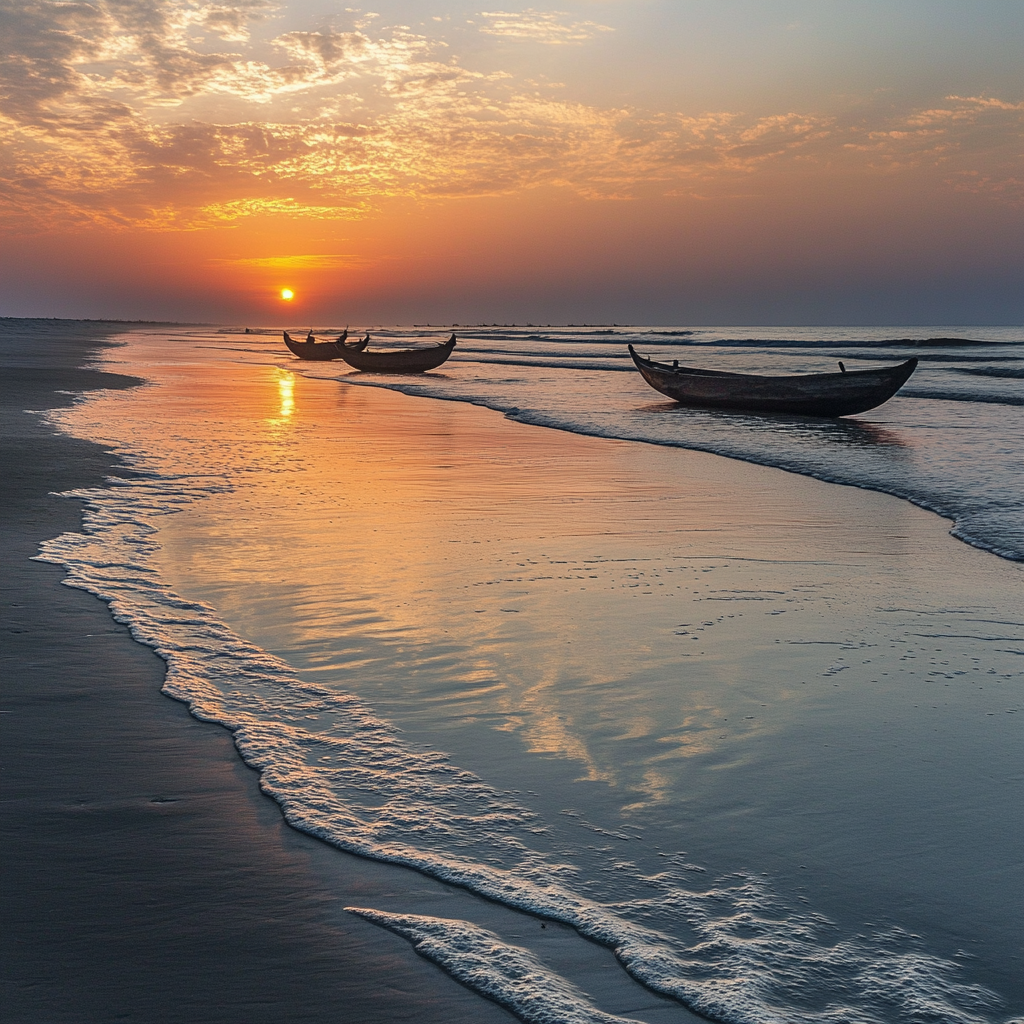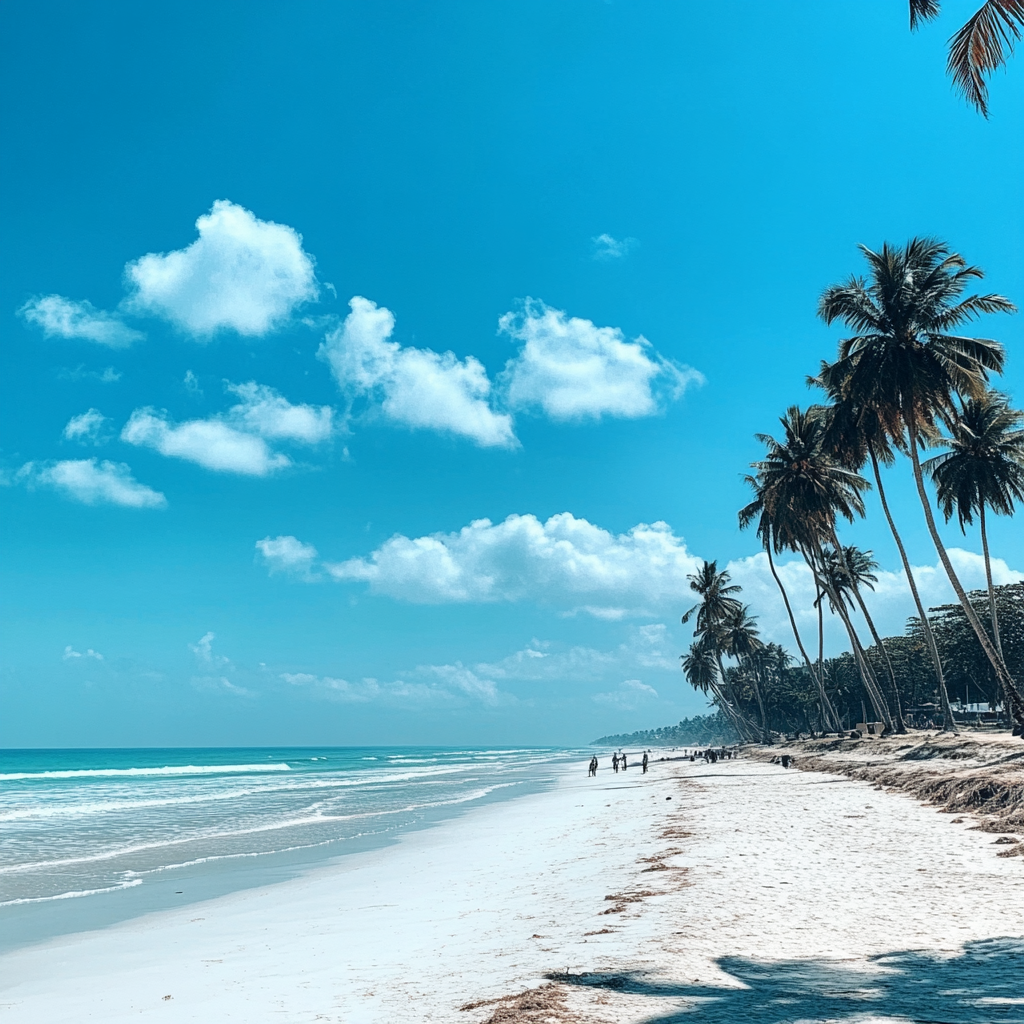How to Prepare for a Vacation in Cox’s Bazar
A Practical Guide
Cox’s Bazar, located along the southeastern coast of Bangladesh, is the world’s longest natural sea beach, stretching over 120 kilometers. It has become a popular destination for both domestic and international tourists, attracting visitors with its vast sandy shores, clear waters, and rich cultural heritage.

Preparing for a trip to this beautiful location involves understanding local conditions, such as climate, currency, and travel logistics. In this guide, we provide practical advice to ensure you are well-prepared for your vacation in Cox’s Bazar.
Packing Essentials for Cox’s Bazar
When preparing for a trip to Cox’s Bazar, the tropical climate is a key consideration. Lightweight, breathable clothing is essential due to the area’s warm and humid weather.
Fabrics like cotton and linen are ideal for keeping cool during the day. Don’t forget to bring swimwear, as the pristine beaches are the central attraction, and you’ll want to take full advantage of the warm waters. Sunscreen, sunglasses, and a wide-brimmed hat are also must-haves to protect yourself from the strong midday sun.
Additionally, some practical items can make your trip more comfortable. Mosquito repellent is vital, especially in the evenings when mosquitoes become more active. Comfortable footwear is recommended for walking along the beach or exploring the local markets.
If you plan on venturing into the surrounding hills or nature reserves, bring sturdy shoes for hiking. A reusable water bottle and a basic first-aid kit will also be useful to ensure you stay hydrated and prepared for minor health issues.
Understanding the Climate of Cox’s Bazar
The climate in Cox’s Bazar is tropical, and your experience will depend on the time of year you visit. The most popular period for tourists is during the winter months, from November to February.
During this time, temperatures range from 20°C to 25°C, providing pleasant conditions for outdoor activities such as beach sports, sightseeing, and nature exploration.


Summer, which lasts from March to June, sees temperatures rising above 30°C, and the humidity can be challenging for some visitors. While this season attracts fewer tourists, it can be a good option if you prefer a quieter trip, though it’s best to plan activities for the cooler parts of the day.
The monsoon season, from June to October, brings heavy rainfall and occasional storms. While this period might not be ideal for beachgoers, the region transforms into a lush, green landscape, offering a serene escape for those who enjoy more peaceful, off-season travel. Keep in mind that travel plans during this time may be affected by the weather.
Navigating Local Currency and Costs
Bangladesh’s official currency is the Bangladeshi Taka (BDT), and while larger hotels and restaurants may accept international credit cards, most local establishments prefer cash. It’s advisable to exchange your money into Taka either upon arrival at the airport or in Dhaka before heading to Cox’s Bazar. ATMs are available in more urban areas, but access may be limited in remote regions.
Cox’s Bazar offers a range of accommodation options to suit all budgets, from budget-friendly guesthouses to luxurious beach resorts. A mid-range hotel typically costs between 3,000 and 6,000 BDT per night, while high-end resorts may charge upwards of 12,000 BDT.
Dining is equally varied, with a meal at a mid-range restaurant costing around 500 to 1,000 BDT per person. For popular dining options, consider visiting Salt Bistro & Cafe or Poushee Restaurant, both of which offer a variety of delicious local dishes. For more authentic and affordable options, you can explore the local street food scene, which offers delicious meals at a fraction of the cost.
Transportation is relatively inexpensive, with tuk-tuks and rickshaws being the most common modes of transport for short distances. It’s a good idea to negotiate fares beforehand, as metered taxis are rare.
How to Get There and Get Around
Reaching Cox’s Bazar from Dhaka can be done via air, road, or rail. Domestic flights are the fastest option, with several airlines offering daily services between Dhaka and Cox’s Bazar. The flight takes approximately one hour, making it the most convenient choice for international travelers looking to minimize travel time.

Alternatively, you can opt for a long-distance bus, which takes around 8 to 12 hours, depending on traffic and road conditions.
While more time-consuming, this can be a budget-friendly option and offers scenic views of Bangladesh’s countryside. Although there is no direct train route to Cox’s Bazar, you can travel by train to Chittagong and then transfer to a bus or taxi for the remainder of the journey.
Once in Cox’s Bazar, getting around is simple. Tuk-tuks and rickshaws are widely available for short distances, while taxis or private cars are better suited for longer trips to nearby attractions, such as Inani Beach or the Himchari National Park.
Health and Safety Considerations
Cox’s Bazar is generally a safe destination, but there are a few health and safety measures to keep in mind. Before your trip, ensure that you are up-to-date on standard vaccinations. Depending on your planned activities and dietary choices, additional vaccinations for hepatitis A, typhoid, and cholera may be recommended, particularly if you plan to eat street food or explore rural areas.
It is important to note that tap water in Bangladesh is not safe for drinking, so stick to bottled water. Bottled water is widely available, but always check that the seal is intact before consuming. Avoid using ice in drinks unless you are certain it was made from purified water.
Travel insurance is highly recommended, particularly if you plan to engage in activities such as hiking, swimming, or other outdoor pursuits. Comprehensive coverage will protect you in case of medical emergencies, lost luggage, or unexpected travel disruptions.
Cultural Etiquette and Local Customs
Bangladesh is a country with deep-rooted cultural traditions, and understanding local customs will enhance your experience in Cox’s Bazar. Modesty is an important cultural value, so while swimwear is appropriate at the beach, it is advisable to dress more conservatively when away from the shore.
Women should consider wearing clothing that covers their shoulders and knees when visiting public places or religious sites.
Bangladesh is predominantly a Muslim country, and respecting local customs, particularly during the holy month of Ramadan, is important. During Ramadan, it is courteous to avoid eating or drinking in public during daylight hours. Additionally, while many locals in Cox’s Bazar speak English, learning a few basic phrases in Bengali can go a long way in showing respect and connecting with the local community.
Conclusion
Cox’s Bazar offers a unique blend of natural beauty, cultural richness, and adventure, making it an ideal destination for travelers. By preparing thoughtfully—packing the right essentials, understanding the local climate, and familiarizing yourself with the local currency and transportation—you can ensure a seamless and enjoyable vacation.
Should you need personalized advice or assistance with planning your trip, professional consultants are available to help you make informed decisions and maximize your experience in this stunning coastal paradise.
